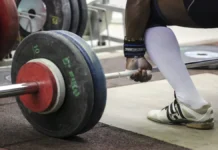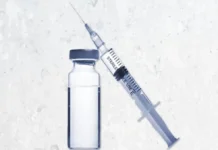Introduction
The history of anabolic steroid use is a fascinating exploration dating back to the mid-20th century. These synthetic substances, derived from testosterone, were initially developed with the aim of improving muscle growth, strength and athletic performance. Although their use began in the medical field to treat conditions such as stunted growth, it quickly took a different turn finding its way into the world of sports and bodybuilding.
Over the decades, anabolic steroids have generated controversy and been surrounded by ethical, medical, and social debates. Their use has experienced periods of popularity and rejection, with significant consequences for the health of users and repercussions for the integrity of sporting competitions.
This exploration of the history of anabolic steroids will delve into the scientific advances, famous use cases, regulatory responses and cultural implications associated with these substances. Examining how their story has evolved over time offers profound insight into the complexity of the relationship between science, medicine, sport and society.
1889 – Charles-Édouard Brown-Séquard and the Strange Quest for Rejuvenation
The French doctor Charles-Édouard Brown-Séquard left his mark on medical history in the 19th century with his radical approach to research on rejuvenation. At the age of 72, he chose an unusual path to explore the possibilities of rediscovering the vitality of youth. The protagonist of this amazing story is testicular fluid, collected from dogs and guinea pigs.
It was during a scientific meeting in Paris that Brown-Séquard captivated his audience by sharing his daring experiments. In front of his astonished medical peers, he announced that he had injected himself with testicular fluid in hopes of revitalizing his aging body. His claims have sparked a mix of skepticism and fascination within the scientific community.
Brown-Séquard was not simply motivated by a personal quest for eternal youth, but rather by a deep conviction in the potential medical benefits of his unorthodox method. He claimed that this autotransfusion experience gave him renewed energy, as well as a boost of vitality that made him feel years younger.
The procedure, although controversial, comes against the backdrop of a time when medical science was actively exploring new, sometimes off-the-beaten-path paths. Brown-Séquard was not the only researcher experimenting with unusual substances in hopes of finding miraculous cures.
However, despite Brown-Séquard’s initial enthusiasm, his statements were met with a considerable dose of skepticism by the medical community. His peers questioned the scientific validity of his experiments and pointed out the lack of rigor in his methodology.
The Brown-Séquard testicular fluid episode highlights humanity’s eternal quest to push the limits of aging. Although his experiments were later widely discredited, the story of this visionary doctor still sparks discussions about the line between scientific audacity and irresponsibility, as well as the search for eternal youth through sometimes controversial.
Charles-Édouard Brown-Séquard, through his unique experience, remains a fascinating character in medical history, a pioneer who dared to explore unexplored territories, even at the cost of controversy and scientific doubt.

1935 – The Anabolic Steroid Revolution and the Nobel Prize
In the heart of the 20th century, German chemist Adolf Butenandt and his team broke new ground in medical research by developing anabolic steroids, a revolutionary advance in the treatment of hypogonadism. This scientific quest would not only transform the understanding of sex hormones, but also earn Butenandt the highest scientific distinction: the Nobel Prize.
In the years before World War II, Butenandt devoted himself to the study of sex hormones, with a particular interest in steroids. Hypogonadism, a disorder characterized by insufficient production of sex hormones, was a difficult area of medicine to treat at the time. Butenandt undertook extensive research to understand these complex biological mechanisms.
Working with his dedicated team, Butenandt successfully synthesized the first anabolic steroids, compounds that mimic the action of natural sex hormones. These substances have demonstrated the ability to stimulate the growth of muscle and bone tissue while regulating hormone levels, providing a glimmer of hope for those suffering from hypogonadism and other medical conditions associated with hormonal imbalance.
The development of anabolic steroids opened a new era in medicine, providing treatment prospects for previously difficult-to-treat medical conditions. The implications were particularly significant in the field of endocrinology and sports medicine, where these compounds found potential applications for recovery from trauma, growth stimulation in children, and other sex hormone-related conditions. .
In recognition of his outstanding contributions, Adolf Butenandt was awarded the Nobel Prize in Chemistry in 1939. His innovative work on sex hormones not only paved the way for new medical treatments, but also laid the foundation for later research on steroids and hormones.
The Nobel Prize was awarded to Butenandt for having “made important contributions to our knowledge of the chemistry of sex hormones.” It was a well-deserved recognition of his commitment to the advancement of medical science and his profound impact on the understanding of the mechanisms governing the endocrine system.
However, over time, the use of anabolic steroids has expanded beyond legitimate medical applications, raising ethical and medical concerns related to their misuse in sports and bodybuilding. Although Butenandt’s discoveries opened important doors, they also raised complex questions about the ethics of physical enhancement using synthetic substances.
Thus, Adolf Butenandt’s legacy transcends his role as a Nobel laureate, marking an era when science discovered new horizons in hormonal regulation while raising fundamental ethical questions about the manipulation of the human body.

1940-45 Anabolic Steroids in the Context of World War II
There are anecdotal accounts suggesting that the Nazis conducted experiments with anabolic steroids on prisoners, members of the Gestapo, and even Adolf Hitler himself. These stories, while often shrouded in mystery and controversy, raise questions about the use of performance-enhancing drugs during World War II.
According to some sources, testosterone and its analogues were administered to German soldiers with the aim of increasing their aggression and physical strength on the battlefield. The idea behind it was to improve the physical and mental performance of troops, thereby creating a more formidable army. This practice, if it occurred, would constitute an early attempt to use performance-enhancing drugs in a military context.
The case of Adolf Hitler himself is particularly intriguing. In retrospect, Hitler’s doctor noted features in the dictator’s mental state near the end of his life that might be associated with heavy anabolic steroid use. Symptoms such as mania, acute paranoid psychoses, excessively aggressive and violent behavior, periods of depression and even suicidal ideologies have been mentioned.
However, it is essential to note that these retrospective observations are surrounded by controversy and speculation. Anecdotal accounts of Nazi steroid use are often based only on unconfirmed testimony and fragmentary information. The true extent and nature of such experiments, if they took place, remain uncertain.
Furthermore, the psychological effects attributed to excessive use of anabolic steroids are complex and can be influenced by various factors. The relationship between steroid use and mental disorders should be interpreted with caution, as other variables, such as political context and pre-existing mental health, may also play a role.
The potential use of anabolic steroids by the Nazis raises considerable ethical questions, particularly regarding human experimentation and the use of performance-enhancing substances in a military context. However, in the absence of compelling evidence, these accounts remain largely speculative and part of the gray areas of history that continue to arouse curiosity and questioning.

1950-1954 – Methandrostenolone (Dianabol) by Ziegler
In the annals of anabolic steroid history, a landmark breakthrough occurred with the creation of Dianabol, a derivative of methandrostenolone, by American researcher John Bosley Ziegler. Marketed by Ciba Pharmaceuticals, Dianabol would become one of the most iconic steroids of its time.
John Ziegler, a physician and researcher, developed methandrostenolone in response to the apparent superiority of Soviet athletes in athletic performance at the Olympic Games in the late 1950s. Inspired by the desire to create an improved anabolic steroid for American athletes, Ziegler collaborated with Ciba Pharmaceuticals to synthesize a revolutionary compound.
In 1958, Dianabol was released commercially, quickly becoming popular among athletes and bodybuilders for its accelerated effects on muscle growth and strength. This new substance quickly spread throughout the world of sports and bodybuilding, spurring a growing interest in anabolic steroids as a means to enhance athletic performance.
Dianabol has gained fame due to its ability to increase nitrogen retention in muscle cells, thereby promoting protein synthesis and stimulating muscle growth. Its introduction marked the beginning of an era where anabolic steroids were increasingly used in sports to enhance physical performance.
However, over time, there have been concerns about the use of Dianabol due to its potential side effects, including liver problems, increased blood pressure, and hormonal fluctuations. Despite these concerns, Dianabol maintained its popularity for several decades, becoming one of the most iconic steroids in bodybuilding.
The history of Dianabol illustrates the complexity of anabolic steroids, combining apparent muscle growth benefits with potential health risks. Its lasting impact in the world of sport and fitness reflects the ambiguities surrounding the use of these substances in the pursuit of enhanced physical performance.
Thus, Dianabol, resulting from the ingenuity of John Ziegler and the collaboration with Ciba Pharmaceuticals, remains a significant chapter in the evolution of anabolic steroids, recalling the ethical and medical complexities associated with the use of these substances in the context sports and bodybuilding.

1969 – Sports Illustrated and Drugs in Sports
In 1969, Sports Illustrated made sports journalism history by launching a three-part investigation into the growing use of performance-enhancing drugs in the sports world. This in-depth investigation shed harsh light on a then-emerging phenomenon that would potentially shake the very foundations of sporting competition.
The findings of this investigation revealed worrying trends, suggesting a possible epidemic of use of stimulant and performance-enhancing drugs among elite athletes. These substances, ranging from stimulants to anabolic steroids, were increasingly present in sporting circles, raising growing concerns about their impact on the fairness of competition and the health of athletes.
The alarming predictions coming from various sources, including former Los Angeles Dodgers team doctor Robert Kerlan, added a sinister dimension to the situation. Kerlan warned that excessive and covert use of performance-enhancing drugs was likely to become a major sporting scandal. This prospect, according to him, would have repercussions comparable to the gambling scandal which had tarnished the reputation of basketball.
The analogy with the gambling scandal highlighted the potential scale of the social and media consequences of an epidemic of drug use in sport. Cases of cheating and manipulation, whether related to betting or performance enhancement, have the power to erode public confidence in the integrity of sporting competitions.
Faced with these revelations, sports bodies and medical authorities faced increasing pressure to strengthen anti-doping controls, develop stricter policies and promote a sports culture focused on health and ethics. The issue was not simply sporting, but also affected the public’s trust and admiration for sporting heroes.
In conclusion, Sports Illustrated’s 1969 investigation into performance-enhancing drugs anticipated an ethical and medical challenge that would haunt the sports world for decades to come. Warnings from respected figures, such as Robert Kerlan, are a reminder that the fight against doping and the preservation of sporting integrity are constant battles that require continued vigilance.

1969 – The Controversial Experiments of Charles-Édouard Brown-Séquard
In 1969, French physician Charles-Édouard Brown-Séquard caused controversy by extracting testicular fluid from dogs and guinea pigs and then injecting the extracted fluid into himself. At a scientific meeting in Paris, he announced his findings, claiming to feel years younger with renewed energy. This experience laid the foundation for hormone research and paved the way for further studies of hormone doping in sports.
1971 – Shock Revelations: “Our Drug-Happy Athletes” by George Walsh
In 1971, Sports Illustrated shook the sports world when it published the article “Our Drug-Happy Athletes” by George Walsh. The bold expose lifted the lid on the widespread use of amphetamines, often called ‘pep pills’, tranquillizers, cocaine and other substances in the world of elite sports.
George Walsh led an in-depth investigation which shed light on the often hidden doping practices of top athletes. The article revealed how some of these substances were used to improve performance, manage pressure and boost energy in athletes, creating an often controversial competitive advantage.
Amphetamines, referred to as “boost pills,” were frequently used to increase alertness, endurance, and concentration. Tranquilizers, on the other hand, were used to calm the nerves and alleviate the stress associated with competition. Cocaine, a powerful drug with stimulant effects, was also part of the picture, raising major concerns about its impact on athletes’ health.
Walsh’s article raised crucial questions about sports ethics, athletes’ health and the effectiveness of anti-doping measures in place at the time. It sparked intense debate about the need to further regulate the use of stimulant substances and prompted sporting bodies to review their anti-doping policies.
In response to these hard-hitting revelations, new anti-doping rules and regulations were introduced in an attempt to preserve the integrity of the sport. Doping controls have become more frequent and sanctions more severe, reflecting growing awareness of the dangers inherent in the use of performance-enhancing substances.
The article “Our Drug-Happy Athletes” marked a turning point in the perception of doping in sport and contributed to the evolution of anti-doping policies around the world. It also laid the foundation for continued awareness of the challenges of combating doping in professional sports, emphasizing the need for constant monitoring and reforms to maintain fairness and the health of athletes.

1973 – East German Women at the World Swimming Championships in Belgrade
In 1973, during the first World Swimming Championships in Belgrade, a notable phenomenon emerged with the exceptional performance of East German women. They won no less than 10 of the 14 gold medals up for grabs, sparking admiration but also questions about training methods and the potential use of steroids.
The stunning success of the East German swimmers has drawn worldwide attention to the sports program of the German Democratic Republic (GDR). At this time, Eastern Germany invested heavily in sport to demonstrate the superiority of its political and social system. The outstanding performances of female athletes, particularly in swimming, were seen as proof of the success of their approach.
However, in hindsight, concerns have emerged regarding the potential use of anabolic steroids and other performance-enhancing substances in the training of East German athletes. These substances were often administered without the athletes’ informed consent, raising important ethical and medical questions.
Anabolic steroids, in particular, were known for their effects on muscle growth and strength, providing a significant competitive advantage. The widespread use of these substances in East German sport was a secret practice at the time, but has since been widely documented and criticized.
The legacy of this period highlights the harmful consequences of the misuse of performance-enhancing substances in sport. Many East German athletes suffered serious health problems later due to the administration of steroids without their informed consent.
Ultimately, the exploits of East German women at the 1973 World Swimming Championships speak to a time when ethical questions surrounding doping in sport were less debated. However, it also marked the beginning of a growing awareness of the dangers associated with the use of performance-enhancing substances and led to reforms in anti-doping policies to protect the health of athletes and preserve fairness in sport.
1975 The International Olympic Committee adds anabolic steroids to its list of banned substances.

1976 – East German Swimmers at the Montreal Olympic Games
At the Montreal Olympics, East German swimmers captivated the world by winning 11 of 13 individual swimming gold medals, setting eight new world records in the process. This remarkable achievement was all the more significant because these Olympic Games were the first to introduce anti-doping controls, marking a crucial step in the fight against the use of performance-enhancing substances in sport.
The dazzling success of the East German swimmers aroused admiration for their exceptional performances, but it also generated questions and speculation about the possibility of use of doping substances. At this time, East Germany was renowned for its intense sports program and rigorous training methods.
The anti-doping controls introduced during the Montreal Olympic Games marked a turning point in the fight against doping in sport. Although the results were not immediately revealed to the public, it represented a first systematic attempt to ensure the integrity of competitions by verifying athletes’ compliance with anti-doping rules.
Over time, revelations emerged about the widespread use of anabolic steroids and other performance-enhancing substances as part of the training program of East German athletes. Swimmers were often put on drug regimens aimed at improving their performance, but these practices were often covered up and administered without the athletes’ informed consent.
The legacy of these 1976 Olympic Games highlights the continuing need to regulate and monitor the use of performance-enhancing substances in sport. Anti-doping controls, although they have sparked controversy and debate, have since been strengthened and become an essential component of major sporting competitions to preserve fairness and guarantee the health of athletes.
The East German swimmers of 1976 remain a prominent example of the ethical challenges associated with doping in sport and helped catalyze significant reforms in anti-doping policies, highlighting the importance of protecting the integrity and ethics of the Olympic movement.

1983 – The Shadows of Doping at the Pan American Games in Caracas
In 1983, during the Pan American Games in Caracas, a dark shadow shrouded the world of weightlifting and athletics as several athletes, including Chicago weightlifter Jeff Michels, were stripped of their medals following tests positive for anabolic steroids. The landmark event highlighted ongoing challenges related to doping in sport and resulted in the withdrawal of several members of the U.S. track and field team from the Pan American Games.
The governing body of the Caracas Pan American Games has taken strong action by stripping three gold medals from Jeff Michels, along with three other Latin American weightlifters, after confirming their positive drug test results. This decision shed light on the doping practices that persisted in the field of weightlifting, calling into question the fairness of competitions and the integrity of performances.
The situation worsened when thirteen members of the U.S. track and field team made the decision to withdraw from the Pan American Games in Caracas. This mass withdrawal highlighted the scale of the doping problem, not only in a specific discipline, but also within the United States national track and field team. The athletes made this decision in a gesture of protest or due to the uncertainty surrounding doping controls and ongoing investigations.
Despite these controversies, twenty-three medals, including 11 gold, were won by American athletes at the Pan American Games in Caracas. However, these victories were tarnished by suspicions of doping and sanctions imposed on some athletes, illustrating the continuing challenges facing the sporting world in ensuring fair and clean competition.
The 1983 episode at the Caracas Pan American Games remains a poignant reminder of the issues surrounding doping in sport and the need for constant monitoring, rigorous anti-doping policies and appropriate sanctions to protect the integrity of competitions and image of athletes. This event helped to raise awareness of the fight against doping and stimulate continued efforts to promote a fair sporting environment free of performance-enhancing substances.

1988 – The Tragedy of the Seoul Olympic Games
The intense rivalry between sprinters Carl Lewis and Ben Johnson came to a head during the Seoul Olympics, creating one of the most memorable, yet controversial, stories in sporting history. Ben Johnson created a stir by setting a record time of 9.79 seconds for 100 meters, knocking off the previous record by 0.14 seconds. However, this historic victory was quickly overshadowed by the detection of the anabolic steroid Stanozol in Johnson’s urine sample, leading to his time being removed from the record books and his gold medal withdrawn.
Ben Johnson’s spectacular feat captivated the world, but the revelation of the use of performance-enhancing drugs generated massive controversy. The detection of Stanozol in his urine sample shed light on doping practices in high-level sport, calling into question the fairness of competitions and the integrity of athletes.
The decision to disqualify Johnson and strip him of his gold medal was swift and final, underscoring the governing bodies’ desire to take strict action against doping. This iconic case also led to increased anti-doping controls and increased awareness of issues surrounding the use of performance-enhancing substances.
The 1988 incident at the Seoul Olympics had lasting repercussions on the sports world, sparking debates about athlete responsibility, the effectiveness of doping controls and the ethics of competition. He urged sports authorities to step up their efforts to combat doping and put in place stricter measures to ensure a fair and clean sporting environment.
Ben Johnson has become an iconic figure in doping in sport, illustrating the risks and consequences of using banned substances. His case helped shape subsequent anti-doping policies and increase awareness among athletes and the public of the ethical issues in high-performance sport.
1991 – Confessions of East German Coaches on Doping
In 1991, the sporting world was shaken by a poignant collective confession from twenty former East German coaches. These professionals shocked public opinion by admitting to having administered anabolic steroids to some of their swimmers. The scale of this revelation highlighted a culture of systematic doping in East German sport, raising major ethical and medical concerns.
The admission by these coaches acted as a catalyst, highlighting the need for more rigorous anti-doping reforms internationally. These revelations have helped to intensify efforts to eliminate doping in sport, while highlighting the importance of increased awareness of the risks associated with the use of performance-enhancing substances.
The repercussions of these confessions have been widespread. Sports authorities have been forced to review their anti-doping policies, introduce stricter controls and put in place tougher sanctions to dissuade athletes from resorting to doping practices. Beyond the sanctions, the episode marked a cultural change, prompting the creation of an anti-doping mentality and the promotion of competition based on ethics, equality and the health of athletes.
Thus, the confessions of East German coaches in 1991 were a defining moment in the fight against doping, shaping a new paradigm focused on preserving the integrity of sport and respecting fundamental ethical principles.
1993 – Explosive Revelations in “Our Drug-Happy Athletes”
In 1993, Sports Illustrated published a powerful article titled “Our Drug-Happy Athletes” written by George Walsh. The expose shed a harsh light on the widespread use of amphetamines, tranquilizers, cocaine and other drugs in the world of elite sports. This bold publication highlighted the complexity of the doping problem, demonstrating that various substances were involved, going beyond just steroids.
The article was a resounding call for immediate action to protect the integrity of the sport. It exposed illicit practices that compromised athletes’ health and eroded public confidence in the fairness of competitions. This publication marked a crucial step in the fight against doping, highlighting the need for stricter monitoring and tougher sanctions to deter athletes from using banned substances.
The repercussions of this article were profound. Sports authorities and anti-doping organizations have been urged to step up their efforts to introduce more robust testing protocols. New regulations have been put in place, aimed at detecting and preventing the use of all forms of doping substances. This publication strengthened global awareness of the issues of doping, reminding us that the preservation of sporting integrity required constant vigilance and continued action.
1999 – The Lance Armstrong Doping Scandal
In 1999, American cyclist Lance Armstrong won his first Tour de France, celebrating a victory that would make cycling history. However, years later, shocking revelations emerged showing that Armstrong had used performance-enhancing drugs throughout his career, casting an indelible shadow over his achievements.
The scandal that followed shook the world of professional cycling. The in-depth investigations have highlighted the scale of widespread cheating in the sport, calling into question the legitimacy of many iconic victories. Armstrong, once hailed as a sporting hero, became the face of an era marred by doping.
This case also revealed the flaws in existing anti-doping controls, prompting sporting bodies to review and strengthen their protocols. The repercussions have been far-reaching, with legal consequences, loss of titles and medals, and a profound questioning of sporting ethics. The Lance Armstrong scandal served as a catalyst for radical change in the fight against doping, highlighting the need for constant vigilance to preserve the integrity of high-performance sport.
2007 – McLaren Report on Doping in Russia
In 2007, the McLaren report shook the sporting world by exposing an institutionalized doping program in Russia. This report exposed the systematic manipulation of urine samples at the 2014 Sochi Olympics, casting a harsh light on the extent of cheating nationwide.
The report’s findings exposed careful orchestration of doping, involving Russian athletes, coaches and sports officials. The sophisticated manipulation of urine samples has sparked global outrage, calling into question the very integrity of sporting competitions.
In response to these shocking revelations, tough sanctions were imposed on Russia, illustrating the imperative need to combat cheating at all levels. Calls for stricter anti-doping controls have intensified, prompting international sports organizations to strengthen their monitoring mechanisms to prevent such misconduct.
The Russian doping scandal has had lasting implications, serving as a reminder that preserving fairness and honesty in sport requires constant vigilance. These events have also stimulated deep reflection on the measures needed to protect the integrity of global sporting competitions and ensure that all athletes compete on an equal footing.
2012 – The Fall of Lance Armstrong
In 2012, cycling icon Lance Armstrong was stripped of his seven Tour de France titles due to his involvement in a vast doping ring. This case was a major turning point in the fight against doping, highlighting the shortcomings of existing controls and underlining the crucial importance of tough sanctions to deter cheating.
Lance Armstrong, once considered one of the greatest cyclists of all time, has been stripped of his iconic victories after years of denials and legal struggle. The overwhelming evidence revealed a sophisticated pattern of systematic doping, involving Armstrong himself, his team, and elaborate cover-up practices.
This affair exposed the flaws in anti-doping controls, highlighting the pressing need for reforms. Sports authorities have been pushed to thoroughly review their policies, strengthen screening protocols and impose tougher sanctions to discourage any attempt at cheating.
Lance Armstrong’s ouster from the cycling scene has had widespread repercussions, sending a clear message of zero tolerance towards doping. This case helped redefine ethical standards in professional cycling and inspired substantial anti-doping reforms globally.
2016 – Doping scandals at the Rio Olympic Games
In 2016, the Rio Olympics were marred by doping scandals that shook the credibility of the competition. One of the notable moments was the collective suspension of Russian athletes due to systematic doping practices. These events have increased pressure on anti-doping bodies, urging them to strengthen testing and ensure fair competition.
The decision to collectively suspend Russian athletes was an unprecedented response to revelations of institutionalized doping in Russia. The overwhelming evidence showed systematic manipulation of urine samples, casting doubt on the legitimacy of Russian performances in several sporting disciplines.
This episode sparked heated debates about the need to protect the integrity of sport and maintain high ethical standards. Calls for stricter anti-doping controls and harsh sanctions have intensified, pushing sports organizations to review their policies and strengthen their monitoring mechanisms.
The doping scandals at the Rio Olympics left an indelible mark on the sporting landscape, serving as a reminder of the fragility of competitive fairness in the absence of rigorous anti-doping measures. These events served as a catalyst for major reforms in the fight against doping, aimed at restoring public confidence in the purity of global sporting competitions.
2020 – The Tokyo Olympic Games and the COVID-19 Pandemic
In 2020, the Tokyo Olympics were postponed due to the COVID-19 pandemic, highlighting the additional challenges organizers face in maintaining rigorous doping controls despite global disruptions. This exceptional situation has highlighted the need for constant adaptations to preserve the integrity of competitions in exceptional circumstances.
Reference
- Freeman ER, Bloom DA, McGuire EJ. A brief history of testosterone. J Urol . 2001;165(2):371-373. doi:10.1097/00005392-200102000-00004.
- Altschule MD, Tillotson KJ. The use of testosterone in the treatment of depressions. N Engl J Med . 1948;239(27):1036-1038. doi:10.1056/NEJM194812302392704.
- Wade N. Anabolic Steroids: Doctors Denounce Them, but Athletes Aren’t Listening. Science . 1972;176(4042):1399-1403. doi:10.1126/science.176.4042.1399.
- Buckley WE, Yesalis CE, Friedl KE, Anderson WA, Streit AL, Wright JE. Estimated prevalence of anabolic steroid use among male high school seniors. JAMA . 1988;260(23):3441-3445.
- Pope HG, Kouri EM, Hudson JI. Effects of supraphysiologic doses of testosterone on mood and aggression in normal men: a randomized controlled trial. Arch Gen Psychiatry . 2000;57(2):133-140; discussion 155-156.
- FDA. Significant Dates in US Food and Drug Law History. 2014. https://wayback.archive-it.org/7993/20170406045722/https://www.fda.gov/AboutFDA/WhatWeDo/History/Milestones/ucm128305.htm . Accessed June 4, 2016.
- DEA. A Dangerous and Illegal Way to Seek Athletic Dominance and Better Appearance – A Guide for Understanding the Dangers of Anabolic Steroids. March 2004. https://www.deadiversion.usdoj.gov/pubs/brochures/steroids/public/ . Accessed April 25, 201


























